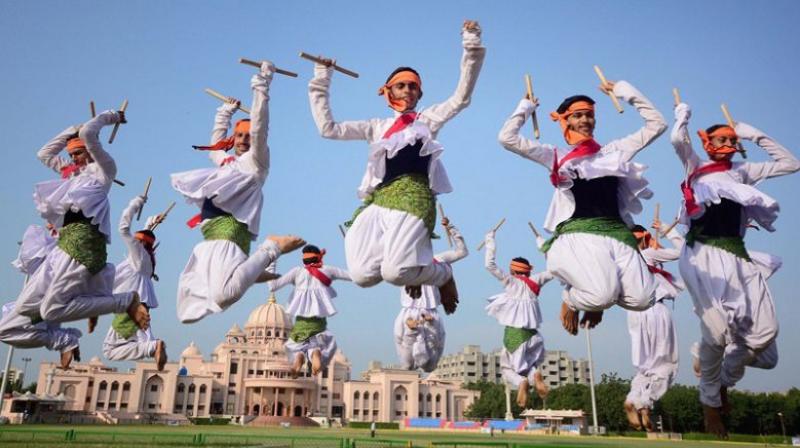Of art and music: Divine compositions represent different versions of religion

In a Hindu household, Navarathri season is rarely found without exhibiting its quintessence through a musical exposition of our culture and religion. The twin streams of the musical compositions of Thyagaraja and Dikshitar spring from the same eternal source - human emotions at their exalted intensity. However, they differ in tempo, rhythm and style and offer a fascinating study of contrast.
We are aware that, to Thyagaraja, divinity is personified in Sri Rama whom he loved with passion and an affection so intense, that it could be enshrined only in the eternal language of music. We find every outward expression in the Thyagaraja kritis that relate to the human emotions of love, chiding, coaxing, praising and worshipping. Several kritis such as Oh Ranga Sayee in raga Kambodi, beseech Rama to respond with unconcealed ardor, seek His benign generosity, in Brova Bharama in raga Bahudari, his devotion is that of a fond child towards a doting parent in Seethamma Mayamma in raga Vasantha, his absolute surrender in Patti Viduvaradhu – these are amongst the several gems of Thygaraja who thought of the benediction of Rama as salvation from the miseries of human life.
He even set aside anything that would obscure an unhindered vision of the greatness of Rama, including a lure for ephemeral pleasures in his Kalyani Raga Kirtana, Nithichala Sugama. I feel that Thygaraja’s knowledge of human nature from its lowest depth to the highest of exaltation is as intimate and intense a pinnacle as that of Shakespeare’s in Othello. On the other hand, the compositions of Dikshitar make us feel that we are in awesome worship inside the altar of an ageless temple. What a contrast!
Take for example, Meenakshi Memudham in raga Poorvikalyani, Chetasri in raga Dwajavanthi, reflecting the imperial theme, the glory and omniscience of God. Hearing several of Dikshitar’s compositons like Subramanyaya Namaste in raga Kambodhi, Akshya Linga Vibhoin in raga Sankarabaranam or his music around the Navagraha kritis – a strange invisible enchantment hits our senses.
It is beyond doubt that all divine compositions represent different versions of the same religion. The same higher purpose of understanding the way of God and the songs of the saints are gifts of the Almighty to man and earth.
(The writer is a well known music critic who has won awards both in India and abroad for propagation of classical arts and music)

